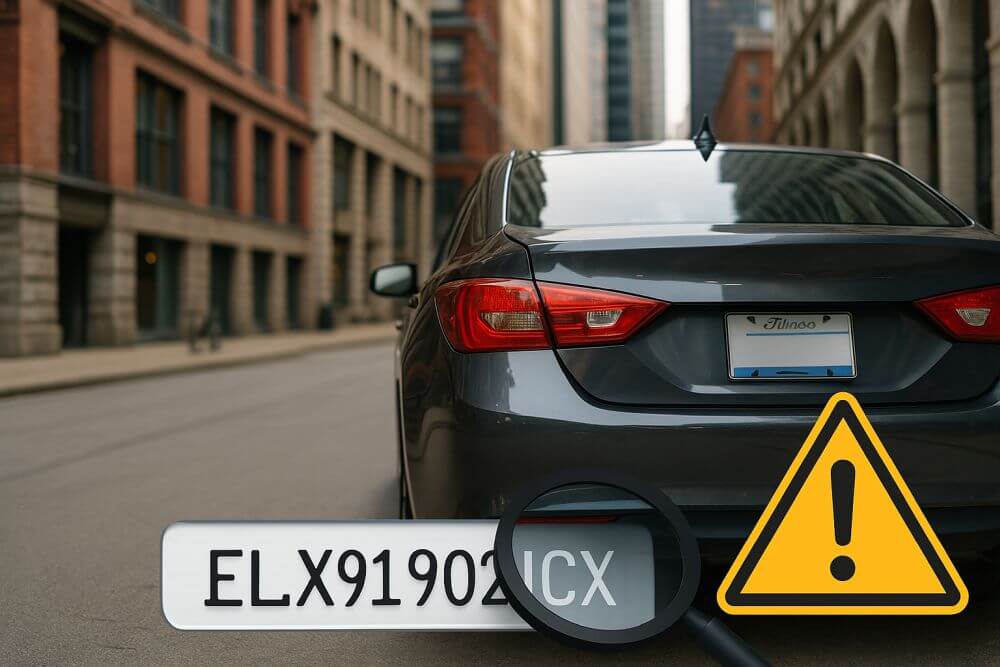The odometer reading statement is just one feature you should check before purchasing a used vehicle. The odometer reading is the measure of distance the vehicle has traveled throughout its history. An odometer reading statement is required when a used car transfers ownership from one owner to the next. These six digits reveal the amount of wear on the car and whether the vehicle still qualifies for certain manufacturer warranties.
When is an Odometer Reading Statement Required?

Odometer reading statements are required whenever a car less than 10 years old transfers ownership, and can be easily reveal via a free VIN check. A bike odometer reading is also a factor in the sale of a motorcycle. An odometer reading exempt status is allowed in the following situations:
- When a vehicle is 10 years or older
- The vehicle is brand new and transferred to a dealer prior to the initial retail purchase
- The vehicle is sold by the manufacturer to an official U.S. agency
- The vehicle is a commercial vehicle weighing more than 8,500 pounds
If the car does not fall into one of these odometer reading exempt categories, an odometer statement is required. When a title transfers from one owner to another, the odometer reading, no tenths included, is completed on the transfer. The appropriate mileage box will also need to be checked, whether the odometer reading refers to “actual miles,” “not actual miles” or “exceed actual miles.”
“Actual miles” means that the miles stated on the odometer are the actual miles the vehicle has traveled. “Not actual miles” means the odometer has been broken, removed or replaced, so the number listed is not the true miles the vehicle has gone. This box can also be checked if the owner is unsure whether the odometer reading is accurate. “Exceed actual miles” is checked if the odometer has reached the highest number possible and has reset back to one.
In most cases, the odometer reading statement provided by the seller of the vehicle is truthful, and it indicates how much road wear the vehicle has had beyond the simple age of the car. However, there are some unscrupulous sellers of used vehicles that might attempt odometer fraud in an effort to boost the “value” – and the price – of the vehicle they are selling.
Beware Odometer Fraud
Odometer fraud is a concern for both the old-fashioned mechanical odometers and their modern, digitized counterparts. In fact, the digital models that were first touted as nearly “tamper-proof” have proven just as easy to change with inexpensive software found through the internet. The practice can be quite lucrative, albeit illegal in every state, since a car’s value can increase by as much as $600 for every 10,000 miles taken off the odometer reading.
Fortunately, there are some fairly effective ways to protect yourself from odometer fraud. These simple steps include:
- Compare the mileage listed on the title with the numbers shown on the odometer. If the numbers on the title appeared blurred or difficult to read, proceed with caution.
- Compare the numbers listed on the odometer with mileage on service and maintenance records. Mileage is required every time a car is taken in for work. Those numbers should continue to increase, with the highest number shown on the actual odometer at the time of sale. In some cases, those mileage records may be included on stickers applied by the mechanic at the time work was done, which are typically applied to the window, door frame or under the hood.
- Look at the general wear and tear of the vehicle to see if it seems to coincide with the number of miles listed on the odometer. If the car seems too worn for the mileage listed, proceed with caution.
- If the odometer states the vehicle has driven 20,000 miles or less, take a peek at the tires. They should be the originals with this low mileage count.
- Get a vehicle history report that will provide you with additional information about the vehicle. A free car report will give you essential facts like a title history and whether the vehicle has ever been reported stolen. An additional vehicle history report, which may cost you a few dollars, could provide valuable information about the vehicles maintenance history, including odometer readings.
In addition to verifying an odometer reading statement, a vehicle history report may tell you whether the car has ever been in an accident, salvaged or “branded” by an insurance company. This means the insurance company wrote the vehicle off as a total loss. These facts can be invaluable if you are trying to purchase a new car for your family that is both safe and reliable.
An odometer reading statement can tell you plenty about a car, but that is just the beginning. In addition to verifying those six important digits, take a peek at a vehicle history report before you purchase a car, so you know exactly what you are paying for.


